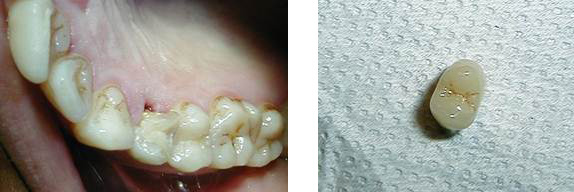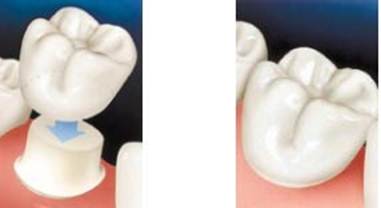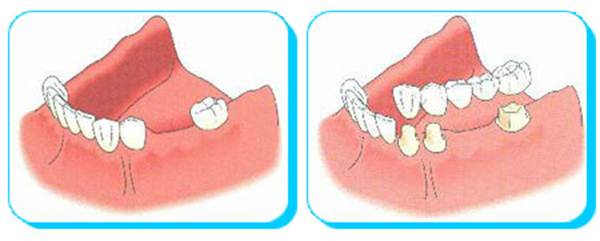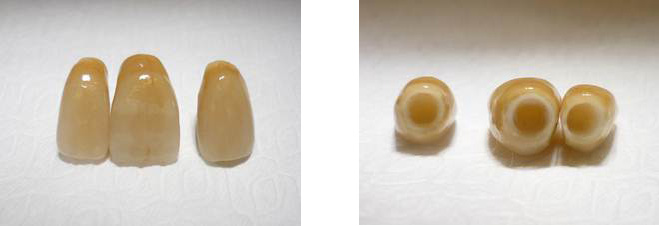Prepared materials used to repair or replace them are called prosthesis in cases where the teeth and surrounding tissues are lost or completely disappeared due to various reasons.
In the prosthesis, while trying to restore the lost functions of the patient, it is also aimed to correct the impaired speech and to improve the aesthetic appearance. In this way, while the oral health, which is largely lost, is corrected, psychological support is provided for individuals who have to live with missing or devastated teeth in the society. Because individuals who have to live their lives (albeit for a while) in this way, first forget about laughing.
This, in addition to functional disorders, causes a loss of self-confidence in people. It is aimed to increase the quality of life of people with various prostheses made for this type of patient.
Teeth wear at different rates as a result of years of people eating, chewing, swallowing and grinding teeth at night for some reason. In addition, bruises and accidental fractures occur in some parts of the teeth. In such cases, the lost structures of the teeth are replaced with prostheses called Kuron.

These crowns used to be made using porcelain, acrylic or metal alloys specially produced for dentistry. Today, in dentistry, especially with the latest developments in porcelain, very natural views can be provided (Low 151 porcelains, Empress, In-Ceram, Procera, Zirconium).
Prostheses made as a result of losing teeth are generally of two types;
1. MOVING PROSTHESES that can be attached and removed by the patient at any time
2. FIXED PROSTHESES such as crowns and bridges, which are made on the teeth in the mouth and which cannot be removed by the patient.
The term Removable Prosthesis is generally used to mean that the patient can put on and remove the prosthesis, which is made in place of the missing teeth. This type of prosthesis must get support from the soft tissues surrounding the teeth as well as the teeth that remain in the mouth. The prosthesis is buried in the soft tissues in the mouth as a result of the load placed on it during chewing, that is, it moves.
Removable Prosthesis type made in cases where one or more teeth are missing; Removable Partial (Partial) Prosthesis,
On the type made in cases where all natural teeth are missing; It is called Full Prosthesis.
Things to watch out for:
- You should clean the prosthesis under running water after each meal and, if possible, with a prosthetic cleaning brush (if you cannot find it, with a soft toothbrush).
- You do not need to use a paste or special substance during cleaning. Wash the prosthesis only with soap (no matter solid or liquid).
- Keeping your prosthesis clean is important for extending the life of the prosthesis and the health of your mouth tissues.
- It should not be forgotten that prostheses that are not well maintained may cause a bad odor in time and may have bad effects on mouth tissues due to microorganisms accumulating on it.
- When you remove your prosthesis, you can put the prosthetic cleaner in the water in the container you hold. However, do not use this without consulting your doctor. Do not hold it for too long as cleaning agents such as bleach can cause rust on the metal part of the prosthesis.
Crown: It is the process of shrinking and covering the teeth with caries, fractures or other material loss due to any other reason.

- To restore a large filling if there is not enough dental support,
- To prevent weak teeth breakage,
- As a superstructure for a dental implant,
- To cover broken, distorted or colored teeth.
Bridge: In the absence of one or more teeth, it is the process of filling the gaps between the neighboring teeth by getting support from the coatings made on them.

When a loss of teeth occurs for any reason, movement towards this gap begins in neighboring teeth. As a result, gingival problems in the adjacent teeth, bone losses due to tipping into this cavity, aesthetic deterioration and changes in chewing forces occur. If this gap is not restored by implant or bridge for a long time, there may be losses in these neighboring teeth. Today, especially the first choice should be an implant. Because it is the primary and economic choice to keep the adjacent teeth natural and prevent the bone in the cavity from melting over time (resorption).
Bridges
- Metal supported crowns and bridges
- Full porcelain crowns and bridges without metal support
Due to the translucency of metal-free porcelain crowns (full porcelain), their depth and vitality are higher, so that the closest results to the natural tooth are obtained.
While full porcelains create an aesthetic very similar to the natural tooth structure as they pass the light, metal porcelains have a dullness and artificiality even if they are made very well. For this reason, full porcelains are preferred especially in the front teeth.
Metal supported porcelains give the appearance of a dark gap in some lights (disco, camera flash, etc.) as if they were not in the mouth. Full porcelains pass all kinds of light, just like natural teeth (Translucense feature).
Metal supported porcelains are mechanically adhered to the tooth. Full porcelains are attached to the tooth mechanically and chemically.
Since there is no metal in the substructure, there is no dark line at the crown-gum level. A more aesthetic appearance is provided.
When the gum is pulled, full porcelains retain their aesthetic appearance, while metal porcelains create a bad image in the area where they merge with the tooth.
There is no full porcelain risk of allergy to some metals (such as nickel allergy) used in the infrastructure.
ZIRCONIUM BASED CROWN AND BRIDGES WITHOUT METAL SUPPORT

In this system, zirconium alloy, a white color, is used instead of metal. The biggest advantage of the system is to provide a full aesthetic appearance on the bridges in the back area with the very high durability it achieves. It stands out from other dental materials with its mechanical resistance, biological compatibility and fracture resistance.
Porcelain Lamina (Laminate Veneer)

Laminate Veneer (porcelain lamina) are porcelain leaves that are adhered to the tooth by removing only the minimum material from the front surface of the teeth. These leaves, which are very thin (0.3, – 0.5 mm) thick, are prepared in desired color lengths and forms and adhered to the front surface of the tooth.
In this method, unlike conventional porcelain crowns, very little enamel tissue is removed from the tooth. Therefore, it is the most conservative (protective) treatment form that can be performed.
Laminate Veneer is very thin, it does not contain metal and its light transmittance properties provide satisfying results that are indistinguishable from real teeth.
Composite Lamina Veneer: Very little material is removed from the front surface of the teeth. In some cases, it is not even necessary to remove the substance. Then the teeth are processed from composite filling similar to their natural layers (enamel-dentin-transparent). The advantage of composite lamina veneers is that it is much more economical than ceramic lamina veneers and the process is finished in one session. But they cannot be as natural as ceramic. Light transmittance is not like ceramics, they can also change color with external factors such as tea, coffee, cigarettes.
- People with small fractures, notches or deformities in their front teeth.
- People with a discolored or dissatisfied color
- In the stains caused by the removal of tetracycline or excess fluoride in the teeth
- In teeth with color change as a result of trauma or canal treatment
- In people whose front teeth are spaced
- For people with disfigured front group teeth and who do not accept orthodontic treatment
You should brush your teeth twice a day and flush once with dental floss. This cleaning process will remove plaques made up of bacteria. The most important point in this matter is the cleaning of plaques in the area where your teeth and gums meet (sulcus).

